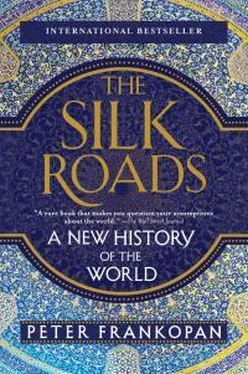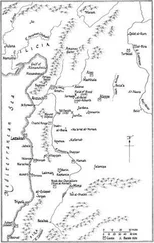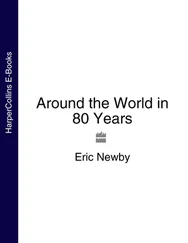As Persia soared, so Rome began to teeter. The Sasanians were not the only problem, for by 300 AD the full length of the empire’s eastern border that ran from the North Sea to the Black, from the Caucasus through to the southern tip of Yemen, was under pressure. The empire had been built on expansion and was protected by a well-drilled military. As territorial growth tailed off—the result of reaching the natural boundaries of the Rhine and Danube and the Taurus and Anti-Taurus ranges in eastern Asia Minor—Rome became a classic victim of its own success: it was now itself a target for those living beyond its borders.
Desperate steps were taken to try to correct a worrying imbalance between dwindling tax revenues and the burgeoning costs of defending the frontiers—to inevitable outcry. One commentator lamented that the Emperor Diocletian, who tried to deal with the fiscal deficit aggressively, created problems rather than solving them, and “in his greed and anxiety, he turned the whole world upside down.”113 A root-and-branch review of the empire’s assets was conducted, the prelude to the overhaul of the tax system. Officials were dispatched to all corners, with assessors turning up unannounced to count every single vine and every single fruit tree with the aim of raising imperial revenues.114 An empire-wide edict was issued setting the prices for staple goods as well as for luxury imports like sesame seed, cumin, horseradish, cinnamon. A fragment of this order recently discovered in Bodrum shows how far the state was trying to reach: no fewer than twenty-six types of footwear from gilded women’s sandals to “purple low-rise Babylonian-style” shoes had price ceilings set on them by Rome’s tax inspectors.115
In the event, the strain of trying to re-establish the empire wore Diocletian out, and he retired to the coast of Croatia, to turn his attention to matters that were more enjoyable than affairs of state. “I wish you would come to Salona,” he wrote to one of his former colleagues, “and see the cabbages I have planted myself”; they were so impressive, he went on, that “one could never be tempted by the prospect of power ever again.”116 Where Augustus had portrayed himself as a soldier in a famous and magnificent statue found at the Prima Porta on the outskirts of Rome, Diocletian preferred to present himself as a farmer. This summed up how Rome’s ambitions had changed over the course of 300 years, from contemplating expansion to India to contemplating the cultivation of prize-winning vegetables.
As the Romans looked on nervously, a mighty storm cloud was gathering. It was the Emperor Constantine who took action. The son of one of the leading men in the empire, he was ambitious and capable, with a knack for finding himself in the right place at the right time. He had a vision of what was needed for Rome that was as clear as it was startling. The empire needed strong leadership—that much was obvious to everyone. But he had a more radical plan than simply concentrating power in his own hands: to build a new city, a new pearl on the string linking the Mediterranean with the east. The location he chose, fittingly, was the point where Europe and Asia meet.
* * *
There had long been rumours of rulers of Rome contemplating moving the seat of imperial power. According to one Roman author, Julius Caesar considered making either Alexandria or the site of ancient Troy in Asia Minor the capital as they were better located to govern where Rome’s interests lay.117 At the start of the fourth century, this finally happened, with a magnificent city established at the crossroads of Europe and Asia that was a statement of where the empire’s focus was fixed.
A splendid new metropolis was built on the site of the old town of Byzantion, on the banks of the Bosporus, which in time came not only to rival Rome but to surpass it. Huge palaces were built, as was a Hippodrome for chariot racing. In the centre of the city an enormous column was set up, carved from a single massive porphyry block, with a statue of the Emperor on the top looking down. The new city was called New Rome, although it quickly came to be known as the city of its founder Constantine—Constantinople. Parallel institutions were set up to mirror those of the mother city, including a senate, whose members were sneered at by some as nouveaux riches—the sons of coppersmiths, bath attendants, sausage-makers and the like.118
Constantinople was to become the largest and most important city in the Mediterranean, far eclipsing its peers in size, influence and importance. Although many modern scholars strongly repudiate the idea that Constantine intended the city to be a new imperial capital, the lavish resources spent on its construction tell their own story.119 Constantinople was situated in a commanding position for other sensitive routes, not least maritime traffic in and out of the Black Sea, and also as a listening point for developments to the east and also the north—in the Balkans and towards the plains of Pannonia, where trouble was brewing.
For the vast majority of the population in antiquity, horizons were decidedly local—with trade and interaction between people being carried out over short distances. Nevertheless, the webs of communities wove into each other to create a world that was complex, where tastes and ideas were shaped by products, artistic principles and influences thousands of miles apart.
Two millennia ago, silks made by hand in China were being worn by the rich and powerful in Carthage and other cities in the Mediterranean, while pottery manufactured in southern France could be found in England and in the Persian Gulf. Spices and condiments grown in India were being used in the kitchens of Xinjiang, as they were in those of Rome. Buildings in northern Afghanistan carried inscriptions in Greek, while horses from Central Asia were being ridden proudly thousands of miles away to the east.
We can imagine the life of a gold coin two millennia ago, struck perhaps in a provincial mint and used by a young soldier as part of his pay to buy goods on the northern frontier in England and finding its way back to Rome in the coffers of an imperial official sent to collect taxes, before passing into the hands of a trader heading east, and then being used to pay for produce bought from traders who had come to sell their provisions at Barygaza. There it was admired and presented to leaders in the Hindu Kush, who marvelled at its design, shape and size and then gave it over to be copied by an engraver—himself perhaps from Rome, perhaps from Persia, or from India or China, or perhaps even someone local who had been taught the skills of striking. This was a world that was connected, complex and hungry for exchange.
It is easy to mould the past into a shape that we find convenient and accessible. But the ancient world was much more sophisticated and interlinked than we sometimes like to think. Seeing Rome as the progenitor of western Europe overlooks the fact that it consistently looked to and in many ways was shaped by influences from the east. The world of antiquity was very much a precursor of the world as we see it today—vibrant, competitive, efficient and energetic. A belt of towns formed a chain spanning Asia. The west had begun to look east, and the east had begun to look west. Together with increasing traffic connecting India with the Persian Gulf and the Red Sea, the ancient Silk Roads of antiquity were coursing with life.
Rome’s eyes had been fixed on Asia from the moment it transformed itself from a republic into an empire. And so too, it turned out, had its soul. For Constantine—and the Roman Empire—had found God; and the new faith was from the east too. Surprisingly, it came not from Persia or from India, but from an unpromising province where three centuries earlier Pontius Pilate had found infamy as governor. Christianity was about to fan out in all directions.
Читать дальше











